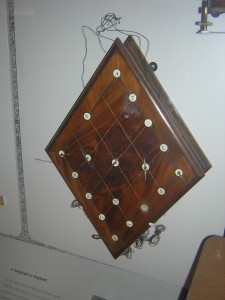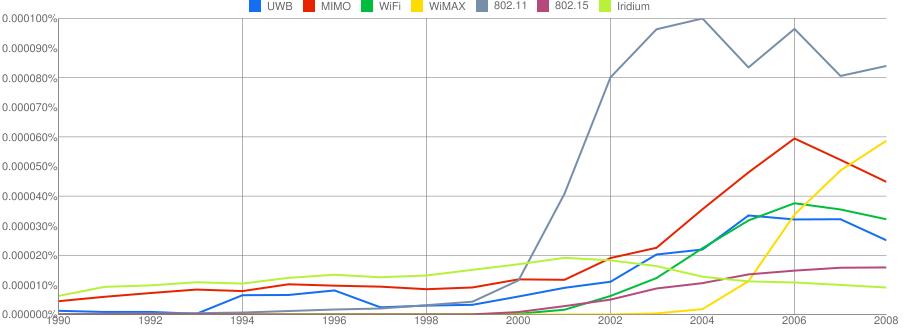
From the “everything old is new again” department comes Tom Standage’s The Victorian Internet: The Remarkable Story of the Telegraph and the Nineteenth Century’s On-line Pioneers. Standage tells the story (familiar to students of electromagnetic history) of the development of the telegraph. Starting with the famous 1746 experiment of Jean-Antoine Nollet in which he gathered a ring of about 200 monks to try to assess the speed at which an electric shock would transfer from monk to monk, he continues with the Napoleonic Era visual (semaphore) telegraph of Claude Chappe.
William Cooke and Charles Wheatstone invented the first electric telegraph. In their scheme, two of five needles point either left or right to intersect, thereby selecting one of twenty letters arrange in a diamond-like pattern. It did work – but stringing the five separate wires required made installation costly.
Painter and inventor Samuel Morse thought he could do better. He devised an alternate telegraph using a single wire communicating letters through various patterns of short and long duration signals (dots and dashes). He assigned letters to his dot and dash patterns with the most common letters assigned the shortest codes – thus increasing overall system efficiency. These “software” innovations made Morse’s hardware a success.
Standage deviates from the usual history – his focus is on the many societal impacts of the technology. In a clever juxtaposition, he draws parallels between the social innovations growing out of the telegraph and those arising from the development of the Internet. The way in which society evolved to cope with the implications of telegraphy teaches valuable lessons for the Internet era.
Standage’s easy to read style makes his book both entertaining and informative. Some of Standage’s anecdotes were familiar from having read Carolyn Marvin’s more scholarly When Old Technologies Were New: Thinking About Electric Communication in the Late Nineteenth Century, which I also recommend.



4 thoughts on “The Victorian Internet”
Hans, you must install a “Like” button on your blog, and perhaps the WP module that notifies people of follow-up or later comments. (I think it’s a WP module, but it might be some other service.) Anyway, . . .
Like.
Thanks for the suggestion. I got burned out after trying three separate widgets to update the Facebook AetherCzar page. I’ll take a look when I get a chance. If you happed across a Word Press blog with that feature, please let me know so I can see about getting the same widget installed here. Thanks!
I think this blog by someone on Ubuntu’s design team was where I first saw such a module used: http://www.ivankamajic.com/
At the bottom, the page credits the Thematic Theme Framework:
http://themeshaper.com/thematic/
That mentions the “Subscribe to Comments” plug-in. I don’t know if that’s it.
I know I’ve seen other blogs with the feature, but I don’t remember any specifically. I remembered enough of Ivanka’s URL that my browser history did the rest. I usually see them from blogs on the aggregators Planet GNOME http://planet.gnome.org or Planet Ubuntu http://planet.ubuntu.com .
I implemented a widget to and retweet and share buttons. Please try them out and let me know how they work for you.